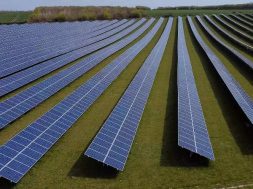
Mono-Si and Multi-Si Market Conditions Become Different, with Booming Growth for the Former and Sluggish Performance for the Latter: Price Trend
The 630 installation rush hasn’t completely started. Yet, mono-si and multi-si supply chains were different. Upstream polysilicon has entered the peak season and the entire supply and demand became balanced; for midstream si-wafer, because the price competition between mono-si and multi-si products has changed, and because demand has become the focus of the industry, the development trends of mono-si and multi-si were different. Under the impact of unstable supply of si-wafer, multi-si PV cell’s momentum can only drive a small number of first-tier manufacturers who have room for price reduction. For the second- and third-tier manufacturers who can’t lower their prices, they took conservative actions and their spaces to survive may be squeezed.
Polysilicon
The polysilicon orders in May have been extended to June. In addition, the manufacturers, who were under overhaul previously, restarted production. In 1H18, the capacity expansion has been achieved. (The top three manufacturers in April were: Zhongneng, TBEA Xinjiang Sunoasis and DAQO, who cover almost half of the capacity). In the future, with the balance between supply and demand, prices will go up steadily.
Price for mono-si material was around RMB 130-133/Kg. Price for multi-si material was around RMB 126-128/Kg. Owing to the stable supply, in the future, the price change for polysilicon will depend on the individual demand for mono-si and multi-si material.
Si-wafer
Price of mono-si wafer remained unchanged. Yet, the actual demand largely increased, especially for high-quality mono-si wafer. The first-tier mono-si manufacturers have reached full capacity in order to meet the demand on the market.
Multi-si wafer became sluggish. For second- and third-tier manufacturers who can’t lower their prices, they reduced the capacity, resulting in the appearance of RMB 3.3/W on the market. Yet, because the trade was quite sluggish, the reasonable transaction price was RMB 3.4-3.45/W. If this condition continues, there may be a new wave of mergers in si-wafer sector.
PV cell
Because the demand of mono-si PV cell grew, the production of high efficiency mono-si PV cell and general mono-si PV cell in China remained steady. The rise of utilization also helped decrease the cost, further increasing the demand on end market and making high efficiency mono-si PV cell gain the highest profits. Price in China reached RMB 1.6/W, and overseas price hit US$0.23/W.
Because Chinese market condition changed and the demand for modules below 270W fell, the overseas orders changed to focus on other products, making the demand for multi-si PV cell become weak. The middle and small-sized manufacturers, who can’t increase the capacity, had to stop production.
Module
The demand of high efficiency mono-si PERC product was strong. Some transaction prices even surpassed RMB 2.7/W. The condition of multi-si module was similar to multi-si PV cell. The focus was the supply of first-tier manufacturers. Due to the pressure from market competition, the middle and small-sized manufacturers only had to take conservative actions. Some manufacturers only had to reduce prices, hoping to lower the cost or exit safely. Because of the continuous supply for the first-tier manufacturers, with the market condition of weak multi-si, the spaces for the middle and small-sized manufacturers to survive may be squeezed.













